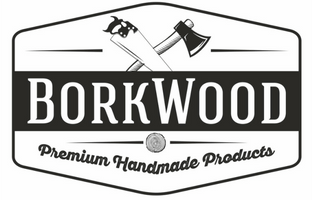Unleashing Diesel Potential: Upgrading the 6.7 Cummins Intake Horn and Manifold
Diesel performance is all about how well your engine breathes. For those who own a 6.7L Cummins, every modification that improves airflow can lead to significant power gains and better fuel efficiency. Two critical components are the intake horn 6.7 Cummins and the intake manifold. In this article, we’ll explore the roles of these components, discuss the benefits of upgrading them, and provide practical tips for installation and maintenance. Whether you’re a performance enthusiast or rely on your truck for heavy-duty tasks, understanding these upgrades is key to unlocking your engine’s full potential.
Breathing Life into the Engine
The Role of the Intake Horn
At the front end of your engine’s air intake system, the intake horn is the gateway for air from the turbocharger and intercooler. In a 6.7 Cummins, the design of the intake horn is crucial because it directly affects the quality of air entering the system. Here’s why it matters:
- Smooth Airflow: A well-designed intake horn minimizes turbulence and pressure losses, ensuring cool, dense air reaches the combustion chambers with minimal disruption.
- Turbocharger Efficiency: By providing a direct and unobstructed pathway, the intake horn helps the turbo spool up faster, reducing lag and delivering power more quickly.
- Enhanced Combustion: Consistent and high-quality airflow means that fuel combustion is more complete, which can result in increased horsepower and better fuel economy.
Upgrading to a performance intake horn can significantly improve how your 6.7 Cummins “breathes.” Advanced designs use precision engineering to optimize the shape and internal geometry, ensuring the engine receives a steady oxygen flow under all conditions.
The Intake Manifold: Distributing Air with Precision
Once the air passes through the intake horn, it enters the intake manifold, a critical component evenly distributing air to each cylinder. The manifold’s design directly impacts engine performance because it determines how efficiently the engine receives air. Here’s how an upgraded intake manifold can make a difference:
- Uniform Air Distribution: An aftermarket manifold is engineered to deliver a balanced air-fuel mixture to every cylinder. This balance is essential for achieving a smooth and powerful combustion process.
- Optimized Runner Design: Modern manifolds feature carefully designed runners that reduce airflow resistance—this optimization improves throttle response and overall engine efficiency.
- Larger Plenum Volume: An increased plenum size acts as an air reservoir, providing consistent airflow even during sudden throttle changes. This is particularly beneficial in heavy-duty scenarios such as towing or off-road driving.
- Heat Management: Efficient manifolds help lower intake air temperatures, which enhances combustion efficiency and reduces stress on engine components.
In many cases, the stock intake manifold is designed with compromises to meet emissions and durability standards. However, upgrading the manifold for performance applications can unlock additional horsepower and provide a more responsive driving experience.
The Synergy of Upgraded Components
Upgrading both the intake horn and the intake manifold creates a synergistic effect that can elevate the performance of your 6.7 Cummins engine to new heights. Here’s how the two components work together:
- Maximized Airflow: While the intake horn ensures a larger volume of cool, dense air is funneled into the system, the upgraded manifold efficiently distributes that air to each cylinder. This combination leads to a significant boost in combustion efficiency.
- Enhanced Turbo Performance: Reduced restrictions mean the turbocharger can work more effectively, providing faster spool-up times and improved responsiveness. This is critical for quick acceleration and maintaining power during high-load situations.
- Overall Engine Efficiency: By ensuring that every drop of air is used effectively, these upgrades contribute to a complete combustion process, increasing power output, enhancing fuel economy, and reducing exhaust gas temperatures (EGTs).
Real-world examples from diesel enthusiasts reveal that even modest improvements in airflow can lead to noticeable gains in horsepower and torque. Truck owners report smoother acceleration, a more responsive throttle, and even better fuel mileage when their intake system is optimized.
Installation Insights
Preparing for the Upgrade
Preparation is key before diving into the installation. Begin by ensuring your vehicle is parked on a level surface with the engine cool. Gather the necessary tools—socket sets, torque wrenches, and cleaning supplies—and review the installation manuals provided by the manufacturer. Documenting the removal process of the stock components with photos or notes can help ensure a smooth reassembly.
Step-by-Step Installation
Remove the Stock Intake Components:
Carefully dismantle the existing intake horn and manifold. Label or document each part, particularly the positioning of gaskets and bolts, to facilitate correct reassembly.
Clean the Mating Surfaces:
Thoroughly clean the surfaces where the new components will be installed. Removing old gasket material and debris is essential for achieving a proper seal.
Install the Upgraded Intake Horn:
Position the new intake horn to align perfectly with the intercooler piping. If your new design includes an integrated heater, confirm it is properly connected and functional.
Fit the New Intake Manifold:
With the intake horn in place, install the upgraded intake manifold. Use a high-quality gasket and follow the recommended torque settings to secure the manifold evenly.
Final Checks and Tuning:
Once installation is complete, reconnect any removed sensors or wiring harnesses. Start the engine to check for proper operation. In light of the new airflow dynamics, consider professional tuning to optimize the air-fuel ratio and other engine parameters.
Professional vs. DIY Installation
While experienced diesel enthusiasts may opt for a DIY approach, professional installation is often recommended for these critical components. Expert technicians can ensure that the components are installed correctly and that any necessary tuning adjustments are made to maximize performance gains.
Maintenance and Longevity
Regular Inspections
Regular maintenance is key to long-term performance once your upgraded intake system is in place. Periodically inspect the intake horn and manifold for signs of wear or damage, such as carbon buildup or gasket deterioration. Early detection of issues can prevent more severe problems and prolong the life of your components.
Cleaning and Upkeep
Keep the intake system clean to ensure optimal airflow. Use a gentle degreaser and soft cloth to remove debris or carbon deposits. A clean system not only maintains performance but also enhances the longevity of the components.
Scheduled Tune-Ups
As with any performance modification, periodic tuning is essential. Revisit your engine’s tuning settings to ensure that the airflow improvements continue to deliver the desired power gains and fuel efficiency. A professional tuning session can help optimize the engine’s performance, adjusting for changes in operating conditions over time.
Real-World Impact
Owners who upgraded their 6.7 Cummins intake system often experience dramatic engine response and overall performance improvements. Enhanced airflow from a high-performance intake horn combined with an optimized manifold has led to quicker turbo spool times, smoother acceleration, and more aggressive power delivery. These benefits are particularly evident in heavy-duty applications like towing and off-road driving, where every bit of airflow counts.
Moreover, improved combustion efficiency typically results in better fuel economy and lower exhaust gas temperatures, contributing to a longer engine lifespan. For daily drivers and performance enthusiasts alike, these modifications translate into a more satisfying driving experience and reduced long-term maintenance costs.
Conclusion
Optimizing your 6.7L Cummins engine’s intake system by upgrading the intake horn and 6.7 Cummins intake manifold is a powerful way to unlock hidden performance potential. Whether you want to improve throttle response, boost horsepower, or enhance fuel efficiency, these modifications offer substantial benefits. A high-performance intake horn ensures the engine receives a steady, high-quality air stream. At the same time, an optimized manifold distributes that air efficiently to all cylinders, resulting in more complete combustion and improved power output.
Successful installation and regular maintenance are key to sustaining these benefits. Professional tuning further refines the performance gains, ensuring your engine operates at its peak potential under all conditions.
Investing in an upgraded intake system is a smart, long-term decision for those who maximize a wiseiesel’s performance. Embrace the transformation and experience the thrill of a more responsive, powerful, and efficient engine. In the competitive world of diesel performance, every improvement counts, and a finely tuned intake system can make all the difference on the road, on the track, or during heavy-duty tasks.






